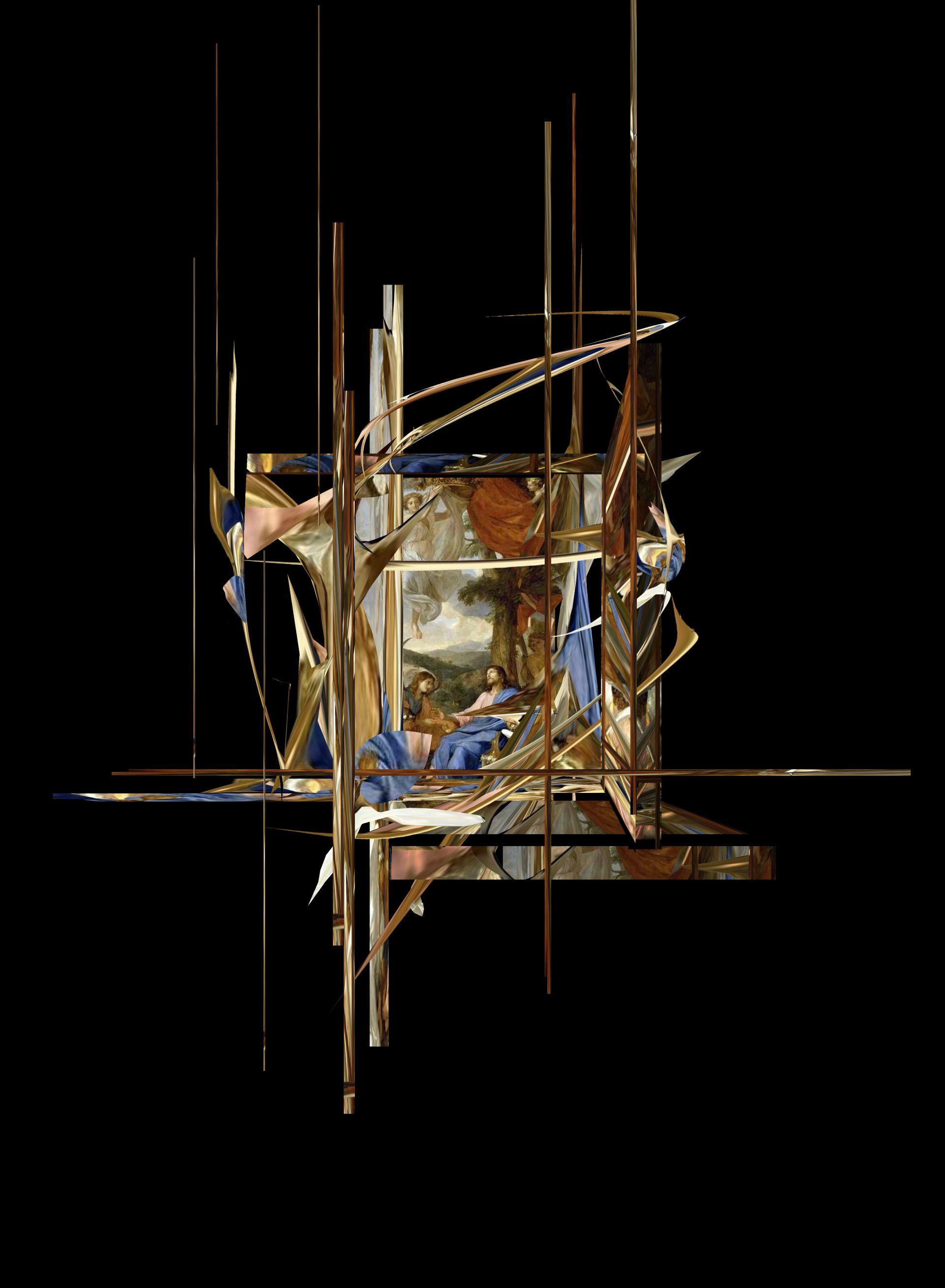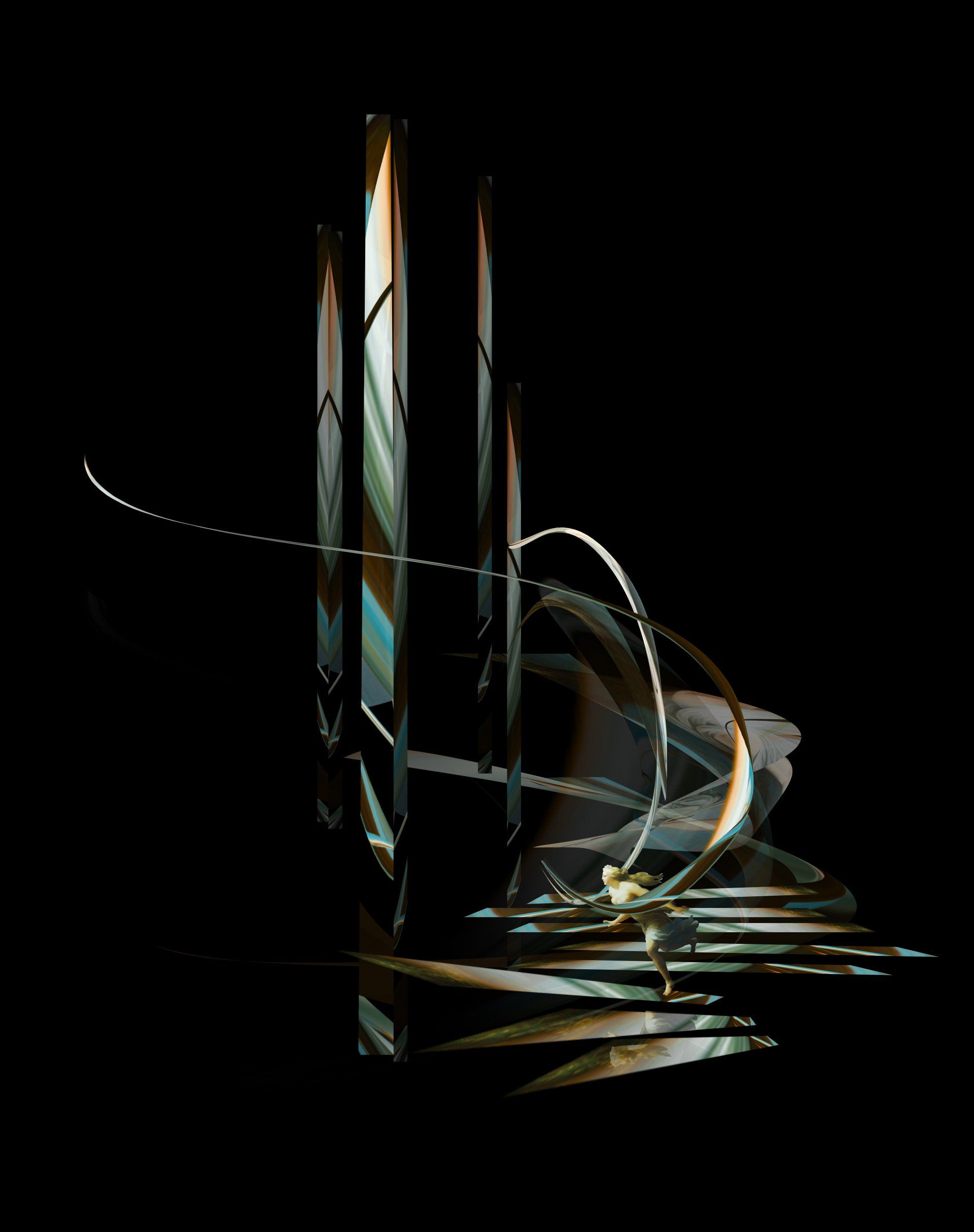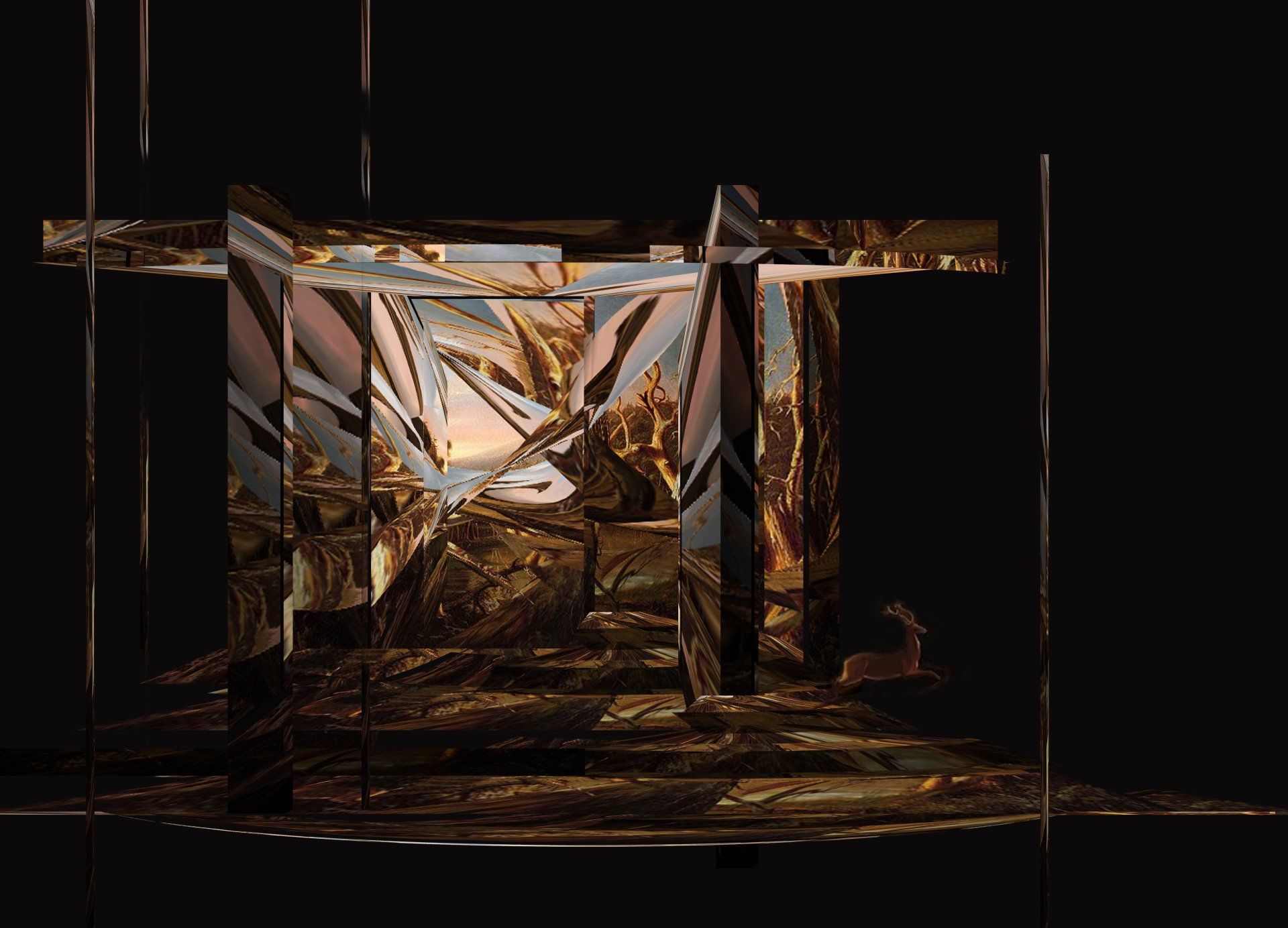ABOUT
Larain Briggs’ multidisciplinary practice is grounded in psychological inquiry and focuses on transformation, symbolic expression, and the process of individuation. Informed by Jungian analytical psychology, her work explores how creative practice serves as a pathway to psychological integration and individuation. She responds to personal experiences of dissociation, fragmentation, and disconnection, alongside the search for meaning amid collective anxiety, cultural disintegration, and the existential uncertainty of the metacrisis.
The theme of dissociation recurs throughout her work both as a psychological response to trauma and as a metaphor for contemporary disconnection. It functions as subject and method, engaging altered states of consciousness to examine trauma, the instability of perception, and the fragile boundary between inner and outer realities.
Briggs works across painting, drawing, video, digital media, assemblage, and installation, intuitively employing layered materials and symbolic imagery to create spaces where boundaries between self and other, reality and illusion become porous, inviting reflective engagement with the unconscious.
Within this emergent and intuitive process, archetypes and symbolic forms unfold synchronistically. Her exploration of dissolution, renewal, and psychological rebirth is guided by an alchemical framework of transformation.
Currently undertaking a Doctorate in Fine Art at the University of East London, Briggs researches the role of Jungian art-based practice in psychological transformation. Based on the East Coast of the UK, she holds a BA (Hons) in Fine Art (Painting) from Camberwell College of Arts (UAL) and a PGCE in Art and Design from Goldsmiths, University of London, complemented by studies in Computer-Aided Visualisation, Analytical Psychology, and Art Therapy.

















